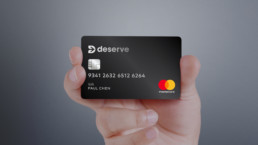Online bank Chime now valued at $1.5 billion after new funding round
[Read on CNBC]
- Financial technology company Chime closes a Series D funding round led by DST Global that more than triples its former valuation.
- Chime also announces it has 3 million users, triple that of last summer.
- "There's pent-up demand for more consumer-friendly banking services," says Chime CEO Chris Britt. "We think there's a better way to do this that's actually aligned with best interests of our members."
Digital bank Chime has tripled its valuation, officially passing the $1 billion-mark this week.
The San Francisco-based company announced a $200 million Series D financing round that brings its new valuation to $1.5 billion. Investors were led by DST Global, which also participated in earlier fundraising rounds, and new investors Coatue, General Atlantic, Iconiq Capital and Dragoneer Investment Group, Chime said Tuesday.
"There's pent-up demand for more consumer-friendly banking services," Chime CEO Chris Britt told CNBC. "We think there's a better way to do this that's actually aligned with the best interests of our members."
The online-only bank lets customers deposit and save money on its platform and spend using a no-fee debit card. Chime earns revenue from debit card transaction fees paid by merchants. Accounts are FDIC-insured through a partnership with Bancorp Bank. The partnership model is an increasingly popular setup for financial technology start-ups that don't have their own bank charters.
The digital-first approach and promise of zero fees has helped Chime attract roughly 200,000 users per month, the company said. Chime said it now has more than 3 million bank accounts, up from 1 million last summer.
So-called challenger banks are an increasingly popular option for consumers who don't want traditional branch-based banking options. These upstart banks often cite the competitive advantage of building their companies on modern technology with a lower cost structure than traditional banks. Since they're only online, they also avoid costs associated with maintaining branches.
Tuesday's announcement marks the highest valuation for a private, venture-backed U.S. challenger bank. Chime's previous $70 million Series C round was led by Menlo Ventures last May, with a $494.73 million valuation, according to data from Pitchbook.
Europe has historically led the challenger banks movement with names like Monzo, Atom Bank, Tandem Bank and Revolut collectively attracting $1 billion in funding and more than 2.5 million customers since 2014, according to CB Insights. U.K.-based digital bank Revolut was most recently valued at $1.5 billion, according to Pitchbook, and it said earlier this year it plans to expand into the United States and Canada.
Chime's new cash injection will allow the company to "aggressively expand" into other areas of financial services like lending and credit, Chime's CEO said. It also plans to expand its 120-person team to 200 by the end of the year. In the past year, it hired Brian Mullins, the former head of risk ops at Square, and Aaron Plante, former business unit leader for student loans at SoFi.
Aspect co-founder Theresia Gouw named to Marie Claire's 6th annual New Guard list
It’s been declared the Year of the Woman for so many years running, it’s about time to acknowledge what we already know: We’re challenging paradigms, upending business as usual, and building a new world order. Not just this year, but from now on.
At Marie Claire, we make it our mission to celebrate women’s triumphs every day, and for our 6th annual New Guard list, we're highlighting the 50 women who really owned 2018. They're disrupting billion-dollar industries (like Bumble’s Whitney Wolfe Herd and Glossier’s Emily Weiss), founding billion-dollar companies (including Adi Tatarko of Houzz and Anne Wojcicki of 23andMe), taking them public (see: Eventbrite’s Julia Hartz and Stitch Fix’s Katrina Lake), and of course, running them (congrats Susan Wojcicki of YouTube and Sukhinder Singh Cassidy of StubHub). Women are also changing the stories we tell (yes, Shonda Rhimes and Ava Duvernay) and how we tell them (a round of applause for Netflix’s Cindy Holland and Disney’s Jennifer Lee).
Listed in alphabetical order—because they’re all on top!—these 50 disrupters, creators, and innovators are seriously leading the charge. We promise by the time you finish scrolling, you’ll feel inspired, empowered, and ready to join them as they shake up the status quo.
Theresia Gouw
An early investment in Facebook helped Gouw’s net worth skyrocket to a reported $500 million, prompting Forbes to proclaim her the richest self-made female venture capitalist in the U.S. this year. What’d she do with the cash? Launched Aspect Ventures—one of the few funds run by two women (Jennifer Fonstad is cofounder)—which closed a $181 million round earlier this year and oversaw its first billion-dollar IPO in cybersecurity startup ForeScout.
Ockam releases open source code to solve IoT developers’ greatest challenges
[Read on Medium]
We are excited to announce the open source release of Ockam which is now available in GitHub.
Today’s product launch furthers our goal to make IoT developers’ lives easier with simple tools that tackle their biggest challenges.
The Ockam open source Software Developer Kit (SDK) contains a library for Golang developers and a Command Line Interface (CLI). Additional language support, features, and tools will be included in future releases. The Ockam SDK allows a developer to build Ockam functionality into their applications or embedded software. When a developer adds the Ockam SDK to the firmware in their connected devices they become clients to the Ockam Network, receive a unique Decentralized ID (did:ockam), can share data as a verified claim with another device, and can verify data that they receive from other IoT devices that are registered with the Network.
Why developers love Ockam
It’s simple
The Ockam SDK gives developers an experience that allows them to add identity, trust and interoperability in IoT devices. They do not need to have a deep understanding of secure IoT network architecture or complex cryptographic key identity management to use Ockam.
Interoperability of a service oriented architecture
Ockam is a new backbone for the next generation of high performance IoT ecosystems. Ockam is interoperable and built for multi-party IoT networks.
Serverless experience with simple pricing
Developers interact with the network with simple functions incorporated in their code, and only pay for what they consume.
Ockam is the ‘Twilio of IoT’
Ockam builds upon the proven developer-first model of Heroku/Twilio/Stripe, which abstracted away the technical complexity of cloud, telecommunications & payments. Developers only need to know a couple Ockam functions from the SDK to tune their IoT devices and applications with best practices.
Ockam is the ‘100x better’ solution for an IoT developer
Every developer gets to the point in a project where they must choose how to add identity, trust and interoperability into their IoT devices. Yesterday they could only choose to:
- Do nothing: this is exceptionally common and leads to botnets and massive security vulnerabilities in devices.
- Build their own end-to-end IoT infrastructure: this is a massive undertaking and costs million of dollars and requires specific expertise.
- Buy an IoT platform vendor solution: end-to-end platforms are complex to implement, have high switching costs and lead to vendor lock-in which limits interoperability.
Today, with the Ockam SDK Launch, developers now have a better option: write a couple lines of code to give their device a secure immutable identity that is interoperable with the rest of their technology stack.
How Ockam works
“Ockam is tuned for IoT”
The architecture of Ockam is tuned to meet the complex needs of an IoT system. We eliminate the blind spots for developers so that they don’t need to focus on difficult architecture decisions or go to the expense required to build and maintain their own infrastructure.
Ockam is serverless
A developer only needs the SDK. The technical complexities of the Ockam Network are completely abstracted away. The developer only has to pay on a per use basis.
Ockam is built on rock solid cloud infrastructure
The Ockam network delivers high performance thanks to Azure confidential compute. Microsoft Engineering is a dedicated technical partner, sharing our quest to make life for IoT developers easy.
Ockam is Open Source, and built with Open Standards
Ockam’s founding team are deep Open Source veterans and have seen the magic that OSS delivers. We have curated the Ockam stack with the best features available and believe in a modular open source tech stack.
About the Founders: The right team at the right time
Developer Platforms and Open Source
While at Microsoft, Ockam CEO Matthew Gregory led Azure’s OSS developer platform strategy. He was a core member of the team responsible for Microsoft’s resurgence via Azure’s pivot to open source. He left Microsoft to revolutionize the IoT industry in the same way that the cloud world was revolutionized. See his thesis on the IoT developer stack here.
IoT Innovation and Security
Ockam CTO Mrinal Wadhwa built a full-stack IoT solution as CTO of Fybr. He’s taking the hard lessons learned from building an end-to-end IoT system and is now applying his knowledge to the Ockam architecture — his second IoT network.
Blockchain
Ockam COO Logan Jager is a seasoned Wall Street Veteran and spent the last decade in global credit markets at Citigroup. Logan’s deep experience in regulated financial markets has been instrumental in orchestrating a high level corporate strategy that turns the legal and regulatory considerations of blockchain into a competitive advantage for Ockam.
For more information
- Nine Factors that tune Ockam’s Architecture for IoT
- Matthew Gregory’s thesis on the future of IoT development
- The Ockam Developer experience
- Why Ockam uses DIDs
- Ockam open source code on GitHub
- Ockam.io
- Ockam.Network
- Microsoft launched Azure Confidential Compute by featuring Ockam
- Follow Ockam on Twitter

The Mom Project, a job site for moms returning to work, nabs $8M from Initialized and more
[Read on TechCrunch]
If you are a mother who has taken a break from full-time employment to raise kids, you may have also experienced the challenge that is jumping back into the working world after your break.
You may find you need more time flexibility; you have been out of the job market for years and so your confidence is knocked; your skills are no longer as relevant as they were before; or you just want to rethink your career; plus many employers — whether they say it or not — seem less interested in you because of all of the above, and no level of burnishing your resume on LinkedIn will help. It can be tough (and I say that from first-hand experience).
Now, Chicago-based startup The Mom Project, a platform specifically built to help female knowledge workers find jobs after pausing to raise kids, has raised a little egg of its own to take on this challenge. It’s picked up a Series A of $8 million that it plans to use to bring its job marketplace to more cities — it’s currently in Chicago, Atlanta and San Francisco — and to expand the kinds of services it offers to make the challenge of juggling work and parenthood easier.
The funding is being led by Grotech Ventures and Initialized Capital, with another new investor, Aspect Ventures, and previous backers Atlanta Seed Company, Engage Ventures, OCA Ventures, BBG Ventures, IrishAngels and Wintrust Financial also participating.
This brings the total raised by The Mom Project to $11 million, and with 75,000 registered moms and 1,000 companies, including Procter & Gamble, BP, Miller Coors and AT&T, the startup claims it’s now the largest platform of its kind in the U.S.
From selling diapers to changing diapers
Allison Robinson, the founder and CEO of The Mom Project, said she came up with the idea for the startup in 2016, when she was on maternity leave from a strategy role at Pampers.
“I started realising a lot about moms before I became one,” she says about her last role before striking out as an entrepreneur. “But what I hadn’t understood until I was on maternity leave myself was that your priorities can change after having a child.” (She’s pictured up above with her son.)
Citing a study she’d seen in the Harvard Business Review that estimated 43 percent of skilled women exit the workforce after having children, Robinson realised there was a gap in the market for those among them who had timed out from returning to their previous roles, but still wanted to make the leap back into working at some point.
And she has a point: Not only do people who decide they want to return to work face all of the usual issues of newly needing more time flexibility, wondering whether their skills are still current enough, general confidence and so on, but the average recruitment process, and job sites overall, do not really have ways to account for any of that very well.
And the gap exists on the employer side of the marketplace, too. Businesses — both large corporates very much in the public eye as well as smaller businesses that are not — are rethinking how they hire and keep good people in the overall competition for talent. (Just this week, the U.K.’s Office of National Statistics said that the number of unfilled positions in the information and communication technology sector rose by 24.3 percent compared to last year in the country, a shortage that’s reflected in other markets.)
Having a diverse workforce — including more women and women from different walks of life — is key not only to helping counteract that, but to contribute to better overall work culture. That’s a fact that many employers have realised independently or have simply been thrown into the spotlight unwittingly and now are trying to repair.
And yet, there haven’t been many opportunities for them to pursue more diverse hiring practices.
LinkedIn recently made a tiny move into exploring diversity in hiring by at least allowing recruiters to search their job candidate results by gender, but this is a far cry from actually addressing the specific predicaments that particular segments of the working population have, and how to help them connect better with employers who might be keen to bring more of them on through recruitment.
In fact, the idea of providing improved job search for knowledge workers in specific cases is actually a very interesting one that shows there is definitely still room for innovation in the world of recruitment: Handshake earlier this year raised $40 million for its own take on this, which is providing a better LinkedIn-style platform to connect minority university graduates with interesting job opportunities at companies keen to make their workforces more diverse.
“Companies have started to realize the value in building a diverse workforce, but we still have a long way to go in achieving equal representation and opportunities,” said Julia Taxin, a partner at Grotech and new Mom Project board member. “Allison and her team have built an incredible marketplace of diverse talent for companies and I look forward to working with The Mom Project to execute on their vision of helping to close the gender gap in the workplace.”
The Mom Project, Robinson said, is tackling the challenges at both ends of the spectrum.
On the employer side, she said there is a lot of educating going on, talking to HR people and getting them to understand the opportunity they could unlock by hiring more parents — which tend to be almost entirely all-women, but sometimes men, too.
“We want to provide more data to these companies,” she said, pointing out that it’s not just a matter of providing a job opportunity, but also giving parents options in areas like childcare, or flexible working schedules. “We want to show them ‘here is where you are doing well, and here is where you are not. Fixes don’t cost a lot of money, but a lot of companies are just not aware.”
“We’ve got 75,000 women on our platform, and currently around 1,000 companies posting jobs,” she said. “The goal is to have 75,000-plus jobs. We want to make sure that all the moms signing up on the platform are getting work.”
“The Mom Project is determined to create a future where women aren’t forced to choose between their families and their careers,” said Alda Leu Dennis, partner at Initialized Capital and new Mom Project board member, in a statement. “There is a huge pool of experienced talent, parents and non-parents, that is sometimes overlooked because companies haven’t created the kind of diverse, flexible workplace culture that attracts and retains them. Initialized wants to be part of making this cultural shift happen.”
On the parent side, not only is it also about making the platform known to people who are considering a return to work, but it’s also about some fundamental, but very important basics, such as giving would-be jobseekers the flexibility to go to interviews. Robinson said that one campaign it’s about to launch, in partnership with Urban Sitter, is to provide free childcare credits to Mom Project jobseekers so that they can get to their interview.
“Sometimes you have to go to an interview with 24 hours’ notice, and lining up a sitter can be stressful,” she said. “We want to alleviate that.”
Parents also know that this isn’t just an issue for the interview: Many towns and regions have what Robinson called “childcare deserts,” where there is a scarcity of affordable options to replace the parent on a more daily basis.
Contract work is king (and queen)
For now, Robinson said that the majority of jobs on the platform are focused on fixed-term employment — that is, not permanent, full-time work.
This is due to a number of reasons. For example, parents coming back to working after a break may be more inclined to ease in with shorter roles and less long-term commitment. And employers are still testing out how this demographic of workers will work out, so to speak. Equally, though, we have seen a huge swing in more general employment trends, where businesses are hiring fixed-term workers rather than full-time employees to account for seasonality and to give themselves more flexibility (not to mention less liability on the benefits front).
While Robinson said that the aim is definitely to bring more full-time job opportunities to the platform over time, this has nonetheless presented an interesting business opportunity to The Mom Project. The startup acts like Airbnb, Amazon and a number of other marketplaces, where it not only connects job-seekers and employers, but also then handles all the transactions around the job. When the job is fixed-term, the Mom Project essentially becomes like the job agency paying the employee, and that is how it makes a cut. And it also becomes the provider of benefits and more.
In other words, while there is an immediate opportunity for The Mom Project to compete against (or at least win some business from) the likes of LinkedIn to target the specific opportunity of providing jobs for women returning to work, there is a potentially and equally big one in becoming a one-stop employment shop to handle customers’ other needs as employers or workers, providing a range of other services, from payroll through to childcare listings and more.
Ticketfly Founder Dan Teree Launches Big Neon to Compete With Eventbrite for Ticketing's Middle Market
He hopes to have the platform powered by the Tari blockchain protocol in 2020.
Ticketfly co-founder and former TicketWeb president Dan Teree is returning to ticketing with a new mobile ticketing platform called Big Neon that aims to be powered by the Tari blockchain protocol in 2020. The announcement comes just weeks after Eventbrite announced it was phasing out Ticketfly, the company Teree created with Andrew Dreskin.
Teree announced the launch of Tari earlier this year with Tari Lab co-founder and cryptocurrency pioneer Riccardo "fluffypony" Spagni and co-founder and entrepreneur Naveen Jain. Now, he tells Billboard the time is right to roll out the ticketing component of the open-source digital asset protocol, with the ticket sales initiative operational in the first quarter of next year.
"Ticketing companies are consolidating and getting bigger, but not necessarily better," says Teree, who exited Ticketfly in 2013, two years before it was acquired by Pandora originally at $450 million then reduced to $335 million at closing. Two years later in 2017, Pandora sold Ticketfly to competitor Eventbrite for $200 million, a price that was later discounted to $184 million. Last month, Eventbrite announced plans to sunset the Ticketfly brand and replace it with the new Eventbrite Music platform, which incorporates Ticketfly technology and has over 50 tech partnerships including YouTube, Spotify and Songkick and Bandsintown.
"They're still busy integrating, so it's hard to move the dial on innovation quickly," Teree says. "We're going to be building brand new, highly-focused applications in a secure language and cruising through development while they're doing client and data migrations and trying to do gap analysis on how [they] deep six the Ticketfly platform."
The Eventbrite development team, which includes 300 engineers and support specialists, easily dwarfs the Big Neon team and the Tari protocol is still in development, meaning Big Neon won't be chain-enabled for at least 18 months, Teree estimates. In the interim, Big Neon's mobile-optimized platform will operate on a centralized basis in the interim period.
"We're going to release Big Neon now and then we will chain-enable it once the Tari protocol is live and in the wild," Teree says. For now, Big Neon will offer a mobile-only ticket solution for general admission events. Promoters will be able to build shows and check ticket counts from a mobile website and app network, and the entire platform will be open-source. Teree said he believes other ticketing companies and entrepreneurs will be able to use the libraries, patterns and scripts from the Big Neon codebase to build in their own third-party distribution networks. Teree foresees Big Neon becoming the first ticketing company to combine primary and secondary ticket sales via block chain technology, allowing rights-holders to set rules around how tickets are priced and resold, while recapturing revenues from each subsequent transaction. Beyond ticketing, the Tari protocol is also being developed for other digital assets, like virtual items people purchase within video games, as well as rewards points and digital collectibles from online loyalty programs.
Former Ticketfly business development director Ryan O'Connor is one of roughly two dozen Big Neon employees spread out over two offices in Oakland and Nashville, as well as the Tari development team in Johannesburg, South Africa. Big Neon has confirmed two current Ticketfly and Eventbrite clients as early Big Neon adopters: Blisspop Productions in Washington DC and Public Works, an 800-capacity club in San Francisco. In a press release announcing the launch of Big Neon, Public Works founder Jeff Whitmore said, "I'm pretty damn confident the Big Neon team will deliver more innovation and genuine customer service in their first year than the other ticketing companies have in the last decade. The industry can use a good swift kick in the $%#!. My money is on Big Neon to provide that kick."
Tari Labs is backed by more than a dozen venture capitalist and growth funds, including Redpoint, Trinity Ventures, Canaan Partners, Blockchain Capital and more. While the current practice in ticketing is to incentivize new promoter and festival clients with large signing bonuses and recoupable advances, Teree says Big Neon was "granting incentive equity to our clients" upon signing.
Teree is sparse on many of the financial details of how the company operates, partially as a regulatory precaution after a U.S. District Court judge earlier this year ruled that the Securities and Exchange Commission had could apply securities rules to cryptocurrencies like Bitcoin and Ethereum. Teree adds that he remains close friends with many former colleagues who now work at Eventbrite or previously worked at Ticketfly and left, but he notes he feels that he has several advantages challenging the middle market leader's market share.
"We're nimble and we're highly focused," Teree says. "Music is a very special entertainment genre and going to night clubs is unique. We plan to help our promoters not only sell tickets but to communicate with their patrons and to increase the overall revenue pool. We're trying to take a holistic approach to the music-going experience."
Future Family secures a $100M credit line to help more families with fertility care
Future Family is a startup (and a Disrupt Startup Battlefield alum!) that helps families more easily afford fertility services like IVF and egg freezing. They work with fertility clinics to get the often unpredictable costs set in stone, then cover said costs and convert them into a more approachable monthly payment plan.
But covering those costs up front isn’t cheap, which lead to long waitlists for those looking to Future Family for help. With that in mind, the company has locked in a $100 million credit line to help them power through their waitlist and immediately offer their services to more people.
The capital is coming from Atalaya, a capital management firm that specializes in funding specialty finance companies like Future Family (or Point, a startup that provides capital to home buyers in exchange for equity in the home, in which Atalaya invested $150 million earlier this year.)
So what does this mean? Most immediately, it means that Future Family will be able to clear up its waitlists before moving on to offering same-day approval/financing to new customers.
Claire Tomkins founded Future Family after seeing for herself just how complicated and expensive the fertility care process could be. After spending hundreds of thousands of dollars on the fertility care involved with having her first child, she set out to make it less complicated and more accessible.
This news comes a little less than two months after Future Family raised $10 million in a Series A round. A few weeks before that, the company adjusted its model to work more like a monthly subscription than a loan, allowing additional costs (like genetic testing and travel) to be wrapped in should the need arise.
Millennial Money: How to Get Credit When You Have None
[Read on The New York Times]
Trying to get your first credit card can be as frustrating as trying to land your first job. Employers want experience, but you can't get experience unless someone hires you. Similarly, a credit card is the quickest way to build a good credit history, but without a good credit history it's hard to get a credit card.
That catch-22 has been tripping up applicants since the Credit Card Act of 2009, which tightened lending standards, making it especially difficult for young people to qualify for credit cards on their own. That's left would-be applicants with less-than-ideal options: Put down a deposit for a secured credit card, piggyback on someone else's good credit as an authorized user, or delay credit building entirely.
This has created an opportunity for startup credit card companies that look beyond credit scores when considering applications. These companies use alternative methods to gauge an applicant's risk and offer cards that don't require a security deposit.
HOW STARTUPS EVALUATE APPLICANTS
Among them is Deserve, which began offering cards in 2017. The company has three cards: the Deserve Classic for people new to credit, the Deserve Edu for students and the Deserve Pro for people with limited credit. More startups have followed with their own cards for people new or newer to credit, including Petal and AvantCard.
These companies have their own underwriting standards to evaluate applicants' creditworthiness based on factors such as income, expenses, assets, debts and banking information. Depending on the company, you may have to provide access to your bank account.
"The way you use a debit card or bank account is highly indicative of how you will use a credit card," says Kalpesh Kapadia, CEO and founder of Deserve.
Cards offered by such companies are an alternative to secured credit cards , which require a cash security deposit that's refunded when you close or upgrade the card. Your credit limit on a secured card will usually be equal to your deposit. The unsecured cards from alternative companies may offer credit limits with more give, if you can qualify.
Startup credit card companies are still evolving, so you may encounter difficulties that you're less likely to see with cards from major issuers. There may not be a mobile app to manage your account, for example, or you may encounter technical issues or delays.
"We are building and improving our product as fast as possible and working on it every single day," says Jason Gross, co-founder and CEO of Petal.
On the other hand, startups are experimenting with features that traditional issuers generally don't offer. For example, the Petal app and website show the interest you'll owe in dollar amounts, so you know the true cost of not paying your bill in full. Deserve waives the usual Social Security number requirement for international students.
YOUR FUTURE SELF MAY NEED CREDIT
Unless you plan to pay cash for all future purchases, big or small, your future self will likely need good credit. Having it can save you money later when you're buying a home or a car, for example.
Anshul Agrawal, a 28-year-old data scientist in San Jose, California, established credit with a card from an alternative issuer. By getting an early start, he qualified for a low interest rate on a car loan. He's now reaping the rewards offered by traditional credit cards. "It's kind of a credit steppingstone," he said.
Alternative credit cards generally report payment information to major credit bureaus — TransUnion, Equifax and Experian. These companies gather the information used to calculate your credit scores. Payment history is the biggest single component of credit scores.
BUILDING CREDIT WITH A CREDIT CARD
Once you get a card, build good credit by making only purchases you can afford. Aim for a credit score of 690 or higher. There are plenty of apps to track your progress. Here are some tips to help you manage your first credit card and use it to build credit:
-Pay on time and in full every month to avoid interest.
-Use less than 30 percent of your available credit limit.
-Keep the account open and active.
-Check your statement for errors.
-Get your free annual credit report
Forbes Most Powerful Women: With Greater Power Comes Greater Responsibility
Aspect co-founder Theresia Gouw was named on the Forbes Most Powerful Women list for 2018.
[Read on Forbes]
Women may still be a minority in tech, but as their power rises, so does their responsibility and visibility. In 2018, many female tech leaders became the face of change in their industry, trying to change sexism from within, or in Sheryl Sandberg's case, becoming the battering ram for all of Facebook's problems from misinformation to election interference.
This year's Forbes Power Women list features 20 stars from across the tech sector whose clout is growing every year.
Topping the tech list for the first time is YouTube CEO Susan Wojcicki (No. 7 overall) who championed diversity in tech and shepherded her company through a shooting at its corporate campus, which left the shooter dead and three people wounded. After James Damore's memo and the broader #MeToo movement, Wojcicki also became a more active voice in encouraging leaders to think about diversity from the top. “Tech is as an incredible force that will change our world in ways we can’t anticipate," Wojcicki told Forbes in April. "If that force is only 20 to 30% women, that is a problem." (Her sister, 23andMe cofounder Anne Wojcicki, also debuted on Forbes Power Women list at No. 92).
Click Here for Full Coverage of the World's Most Powerful Women
Wojcicki has also faced criticism that her company has struggled to filter out fake news and conspiracy theories, especially after a Florida school shooting survivor was labeled as a crisis actor in a trending video. In an October interview at the Wired25 summit, Wojcicki acknowledged that the openness and ability for anyone to post a video on YouTube is valuable, but "we have to marry that with responsibility."
It's a stance that Ginni Rometty, CEO of IBM and No. 10 on the overall list, also champions. In a speech in Brussels on November 26, Rometty pushed for more regulation when it comes to content being published online. "Collectively, dominant online platforms have more power to shape public opinion than newspapers or the television ever had, yet they face very little regulation or liability," Rometty said. "On liability, new thinking is needed."
If the platforms are to be held to greater standards though, so too are its leaders. Facebook's COO Sheryl Sandberg (No. 11 overall) lost her position as the most powerful woman in tech after six years in the top slot as Facebook faces mounting criticism over how it's handled election interference. Sandberg appeared before a Senate judiciary committee in September to address election-related meddling and abuse on Facebook's platform. In November, public confidence in Sandberg's leadership was shaken after a New York Times report about Facebook's approach to misinformation and Russian interference, tied some of
She's not the only executive on an apology tour either. In China, Didi's Jean Liu, No. 46 overall, is making safety overhauls to her ridesharing goliath after two women were killed by Didi drivers this year. “The tragedy reminded us we have walked this path without enough respect or humility,” Didi founder Cheng Wei and President Jean Liu said in a statement at the time. “We see clearly this is because our vanity overtook our original belief. We raced non-stop, riding on the force of breathless expansion and capital, through these few years; but this has no meaning in such a tragic loss of life.”
While women may be taking responsibility within their own companies, others are taking industry-wide responsibility. In February 2018, list newcomers Cowboy Ventures founder Aileen Lee (No. 93) and Aspect Ventures founder Theresia Guow(No. 98), along with returnee Kirsten Green (No. 89), founder of Forerunner Ventures, launched All Raise, a nonprofit to change the number of women in venture capital and the number of female founders. Together, All Raise has launched a CEO coaching initiative, created an industry database of women looking for roles in venture capital, and held conferences for women in the industry to network and be supported. Their collective work could see more women in tech continue to rise to power and move the industry forward as future list-makers. Talk about passing the baton.
Top 20 Most Powerful Women In Tech
- Susan Wojcicki, CEO, YouTube
- Ginni Rommetty, CEO, IBM
- Sheryl Sandberg, COO, Facebook
- Angela Ahrendts, Senior VP, Apple
- Safra Catz, Co-CEO, Oracle
- Ruth Porat, CFO, Alphabet
- Amy Hood, CFO, Microsoft
- Jean Liu, President, Didi Chuxing
- Roshni Nadar Malhotra, CEO, HCL Technologies
- Jennifer Morgan, President, SAP, Americas and Asia Pacific Japan
- Gwynne Shotwell, President, SpaceX
- Zhou Qunfei, CEO, Lens Technolgy
- Belinda Johnson, COO, Airbnb
- Meg Whitman, CEO, Quibi
- Lam Wai Ying, Chairman, Biel Crystal
- Jenny Lee, Managing partner, GGV Capital
- Kirsten Green, Founder, Forerunner Ventures
- Anne Wojcicki, Cofounder and CEO, 23andMe
- Aileen Lee, Founder, Cowboy Ventures
- Theresia Gouw, Founder, Aspect Ventures
The ‘Neo-Banks’ Are Finally Having Their Moment
[Read on The New York Times]
SAN FRANCISCO — After the financial crisis 10 years ago, unhappy customers were expected to flee the megabanks for smaller competitors.
It didn’t happen. And the big banks became even more entrenched.
Now another wave of alternative banks are at it again, and they say they’ve learned from the mistakes of the upstart banks that tried — and failed — before them.
Chime, the biggest new name to pop up, has opened two million fee-free online checking accounts and is adding more customers each month than Wells Fargo or Citibank.
That has inspired a crop of newer start-ups, like Empower, which started its first fee-free online checking accounts, with lots of digital bells and whistles, in October.
Venture capitalists are pouring money into American start-ups that are offering basic banking services — known as neo-banks or challenger banks. In 2018 so far, American neo-banks have gotten four times as much funding as they did last year, and 10 times as much funding as they did in 2015, according to data from CB Insights.
Big players from outside the consumer banking industry, like Square and Goldman Sachs, are also moving in.
“In consumer banking, you have what is one of the largest industries in the United States, in terms of profits, and at the same time one of the least disrupted industries, and the most unpopular with consumers,” said Andrei Cherny, the founder of Aspiration, a neo-bank that has attracted nearly a million customers. “Those three things create a perfect storm for disruption.”
The persistent unpopularity of big banks has been a boon to the newcomers. And they are helped by a new attitude among financial regulators who have grown more comfortable with online banking and young customers who have no hesitation about cashing a check or sending money on a phone.
That doesn’t mean that building a profitable business will be easy, as the first neo-banks, like Simple and Moven, discovered. Establishment banks have big budgets to fend off challengers. And the services that many neo-banks are starting with, like checking and savings, are not very profitable. Chime and its ilk all want to eventually move into lending and other businesses.
There is, however, a growing conviction that banking is set to change. The consulting firm CG42 said in a recent report that it expected the 10 largest banks would lose $159 billion in deposits to smaller competitors over the next year.
“Everyone is looking at cards and bank accounts as the next battleground,” said Lindsay Davis, an analyst covering financial technology companies for CB Insights.
The new financial outfits are trying to replace the old, branch-based way of banking with a mobile phone-friendly account that does away with the fees that have made banking giants so unpopular.
Andrea Johnson, a dispatcher for a utility company in Michigan, switched to Chime after her old bank, PNC, charged her an overdraft fee as a result of another fee from the bank that had emptied her account.
“That blew my mind: one fee leading to another fee,” Ms. Johnson, 35, said. “They are going to find a way to nickel-and-dime you to death.”
Since she switched to Chime, Ms. Johnson said, she hasn’t missed PNC’s physical branches and has appreciated some of the start-up’s perks, like getting money from her paycheck two days early.
Chime, which has 100 employees in downtown San Francisco, makes money by collecting a fee from Visa every time its customers use Chime’s debit card to make a payment. The company has received $105 million in investments from venture capital firms.“If you look ahead five years, there’s no way there will be a financial services industry that is charging consumers $30 billion a year in overdraft fees,” said Chris Britt, the chief executive of Chime. “We aim to shake that up, and I think a lot of other consumer companies will be doing the same thing.”
The deposits going to start-ups like Chime and Aspiration are still a drop in the bucket compared with the trillions of dollars in accounts at places like JPMorgan Chase and Wells Fargo. New companies in the United States are also lagging those in places like China and Britain, where a much greater proportion of consumers have already fled to upstarts.
But fast-growing online banks in Britain like Monzo and Revolut are providing a template for American start-ups. Both companies have said they want to move into the United States.
Banking regulators recently signaled that they will give the first banking charter to a neo-bank — Varo, a San Francisco start-up that is offering fee-free checking accounts without any minimum balances. Another national bank regulator, the Office of the Comptroller of the Currency, has said it plans to begin offering special fintech charters to new companies that want to handle money.
These charters will allow start-ups like Varo to operate without relying on an established bank to hold their money, which adds significant costs.
Most of the new companies have kept their money and run transactions through partner banks, generally smaller regional banks that don’t have the money or the expertise to build out their own digital services.
Traditional banks are recognizing the threat. Wells Fargo is testing an app-based banking product, Greenhouse, that does away with overdraft fees and service fees.
JPMorgan Chase already offers a similar app, Finn, aimed at younger customers and announced last month that it was building a new fintech campus in Silicon Valley.
The banks are struggling to adapt because they have built an expensive infrastructure of local branches and have become increasingly reliant on revenue from fees. Surveys have shown that a wide array of fees, for everything from A.T.M. use to checking account maintenance, have been steadily rising in recent years.
The big banks have also held on to the interest payments they get rather than passing them along to depositors. That has created an opening for online companies. Empower is paying its customers 2 percent for deposits, compared with the 0.01 percent that Wells Fargo is offering.
One of the most unexpected new competitors has been Goldman Sachs. Goldman took its first step with an online lending product called Marcus. It has combined that with an online savings account that is offering customers 2.05 percent for deposits, and executives have signaled that they plan to expand to a full-service online bank.
Several other established companies are also moving in. Acorn, which attracted four million customers to its investing app, is about to start offering its customers a debit card to spend their money. And SoFi, originally an online lender, has added a bank account offering this year. Even Amazon is rumored to be working on a checking account for younger customers.
Square, which began processing payments for merchants, has created what amounts to a bank account with its Square Cash app and associated debit card. It started allowing customers to deposit their paychecks into the account this year.
“We are reaching an audience that is underserved and even to the point of unbanked, which wasn’t a stated goal, but it’s something we love and want to lean into more,” Square’s chief executive, Jack Dorsey, said at a conference in May.












